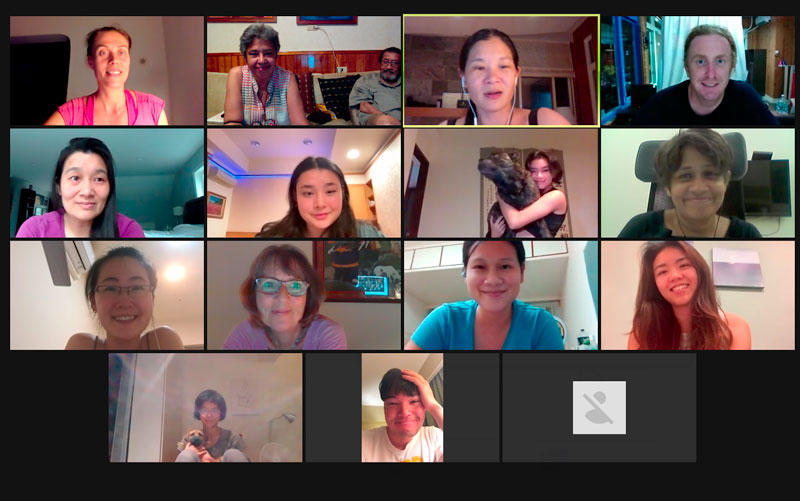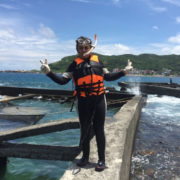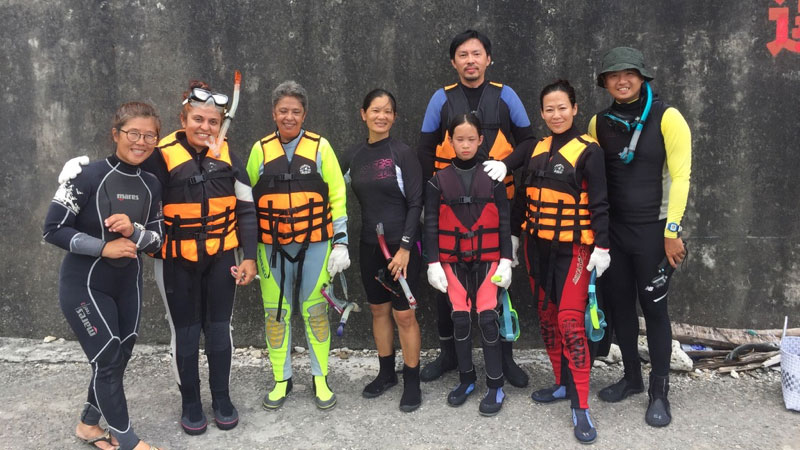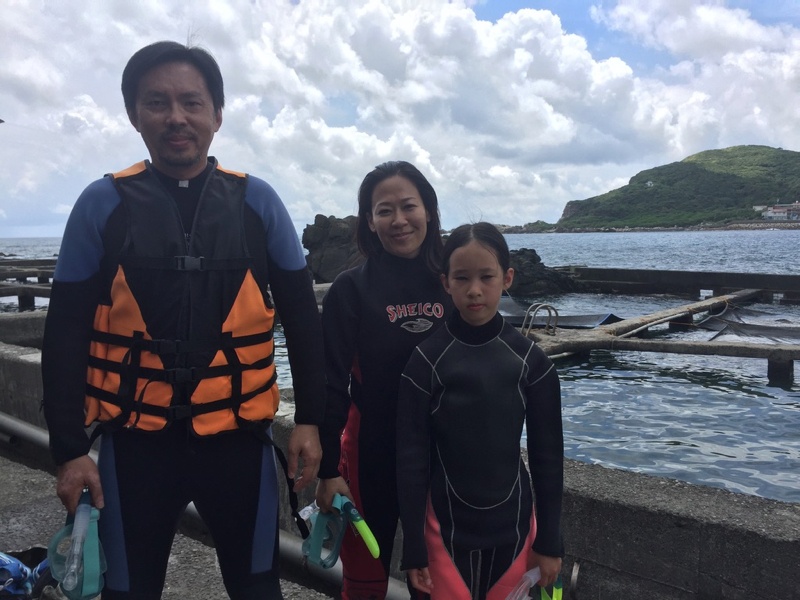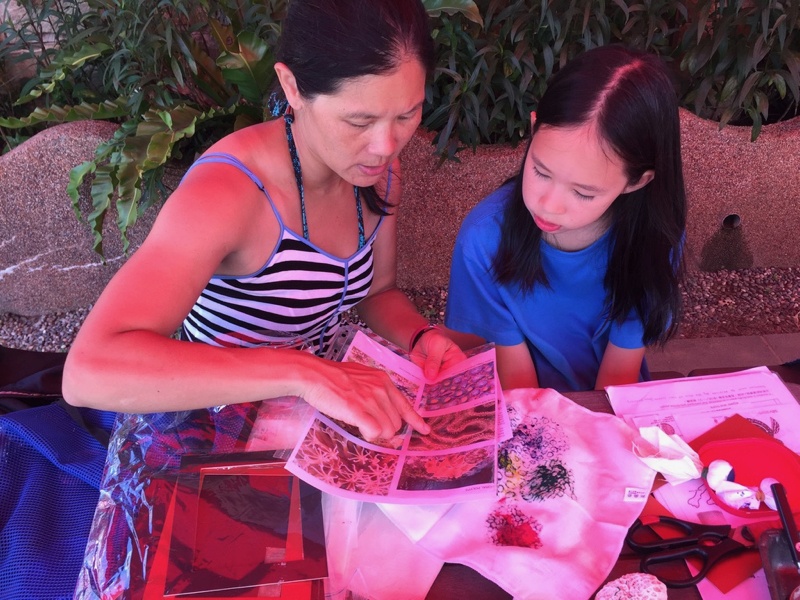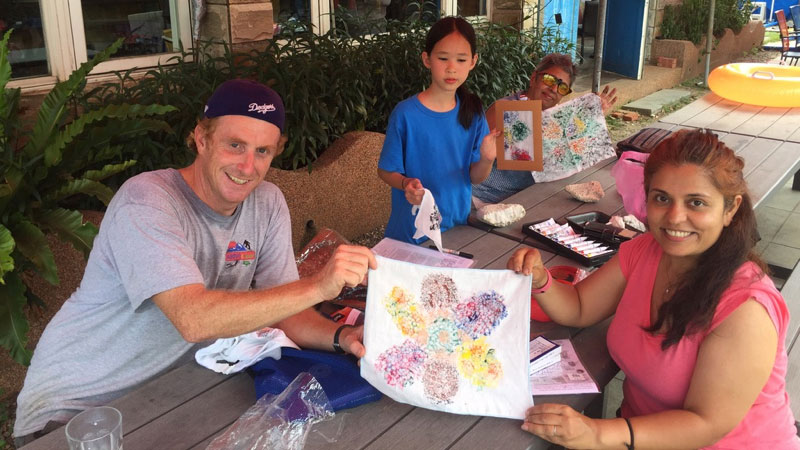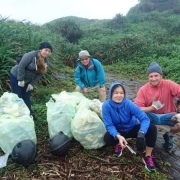Eco Gathering – Environmental Art
Taiwan has undergone rapid industrialization in the 1970s and 80s, during which it prioritized the quality of manufactured goods over the environment. The contamination of Taiwan’s air, water, and soil was inevitable during this period of rapid development, but now there are growing interests in rejuvenating and protecting the environment. Over the last decade, interest in environmental and eco-art has grown with artists, festivals, and other initiatives trying to reconnect humans with their local habitats while being creative and learning about the environment. Red Room’s recent Eco Gathering, – the first in an ongoing series – did exactly that.
Waves and warm smiles welcomed me when I joined the Eco Gathering Zoom video call hosted by Red Room on Sunday evening. The event was led by R.A.R.E. (Rare Animals Really Endangered) founder and environmental artist La Benida Hui and moderated by long-time Red Roomer and environmentalist Anne Dewees. The gathering started with La Benida’s mindful drawing activity which led to her recount experiences of teaching environmental art on a small island off the coast of Taiwan and voyaging across the Pacific ocean to collect harmful debris and pollution in the sea. Her thoughtful presentation was then a segway into a fruitful debate among listeners, leaving us with reflective questions about how our actions affect our home and a new understanding for environmental art.
La Benida began her topic, “Art as a tool of Environmental Communication and Soft Power for Change,” with a short introduction, then asked us to prepare paper and pens. She instructed us to draw our home — the house where we live. She then guided us to draw concentric circles of different colors around the place we considered home. The circles were consecutively labeled home, neighborhood, district, city, country, and ocean as they increased in size. The activity allowed us to appreciate that our home is not just our house, but is also connected to the surrounding nature, and the whole planet.
I took the point of the exercise to be that well-meaning phrases like “Reduce, reuse, recycle” are often reduced to platitudes because of the ease and looseness with which people throw them around, neglecting to consider their true meanings and impact. Benida went on to share her experiences and struggles in working to spread environmental awareness and art in Taiwan. A trip to Xiaoliuqiu (小琉球), a small island off the coast of Pingdong, inspired her to bring R.A.R.E. to Taiwan.
The R.A.R.E. mission is inspired by Baba Dioum’s famous quote: “In the end we will conserve only what we love, we will love only what we understand, and we will understand only what we are taught.” La Benida’s environmental education focuses on exploring the gaps in these relationships. She says, “Taiwanese follow the rules (basic terms/commands), and they do what they are told to do, but the thing is, don’t you want to know why we should follow them?”
“Telling people what to do will not achieve the goal of protecting the environment because they won’t understand what they’re doing or their connection to our home,” La Benida says. “So how can they care for the environment?” Her answer is to use environmental art because, she says, “It bridges that gap.” In Taiwan, the educational style is about obeying commands and following the rules, whereas art has no rules, it is free of boundaries: “Don’t be afraid to make that fish whatever color you want it to be; drawing rainbow fish is not wrong.”
For La Benida, the meaning behind a piece of art and the concept that it embodies are important parts of engaging an audience and offer opportunities to tell a story and connect the art and the concept, such as environmental pollution. She believes that “bringing in facts and background information makes [the] art that much stronger.”
Cultural differences have at times been a hindrance to La Benida’s mission to spread awareness and educate through art. On her journey to Xiaoliuqiu (小琉球), it took time to understand where she stood as an outsider trying to communicate with Taiwanese-speaking locals. The Taiwanese culture of “saving face” impeded communication at times when La Benida may or may not have realized she was being too direct in the locals’ eyes. Bureaucracy also got in the way. Governmental procedural hoops, which often ended up repeating themselves, becoming vicious cycles that took up valuable time, often due to unforeseen requirements to write elaborate proposals or provide data. But Benida adapted and persevered, reminding herself that art and teaching were her passions, even if writing proposals was not. “It was a learning curve in shifting that mindset,” La Benida says about finding ways to balance cultural differences and her own artistic aims as a way to keep going.
From Art to Sustainability
Benida hopes that as an artist she can lead and make a bigger impact. The younger generation is her target audience when she teaches environmental art, and she says “it is about them understanding the environment so they can begin to care.”
“The art of transformative cultural innovation is to a large extent about making our peace with ‘not knowing’ and living into the questions more deeply, making sure we are asking the right questions,” Benida shared. So wrote Daniel C, Wahl in his article, “Sustainability is Not Enough, We Need Regenerative Cultures.” His message is that we need to learn to live with meaningful questions and try to understand them. Wahl’s message aligns with Benida’s, which is to allow people to understand our environment and home, rather than parroting cliche admonitions like “reduce, reuse, recycle.”
“Consuming better means consuming less.”
Anne Dewees, our moderator for the Eco Gathering, shared her experiences as a teacher and how she came to be an environmentalist.
For Anne, the journey to environmentalism was one with many stops and touchpoints. She fondly recalls her grandmother saving every single bit of plastic and putting them into jars in a big cupboard, which created an atmosphere and culture of saving resources in her family. During her studies in Paris, Anne often rode a bicycle. “I was the only one to ride a bicycle, I thought it was terrible because of how many cars there were,” she says. To strengthen her resolve, she joined an association promoting bicycles in Paris. Her time in Germany and Austria also influenced her perspective on recycling. In those two countries, she took note that recycling was more thorough than in France. Life eventually took Anne to China, where, as an executive advisor for sustainability, she began to attend environmentally-themed events hosted by companies. She noticed that the presentations consistently overstated sustainability. She realized that she was in fact working for corporate profits, not the environment.
Anne believes that the biggest challenge to the environment today is the consumption mindset we have cultivated. “This is the model we stick to now,” Anne said. “We talk about growth, GDP, and so on. Everything is oriented towards consumption.” She also disagrees with the idea that we should “consume better” rather than simply consuming less.
Working with companies as a sustainability advisor shaped Anne’s opinions of what it means to be sustainable. Companies need to sustain themselves by selling products and yet the sustainability events she would attend pushed a narrative very much the opposite of consuming less. Companies do need to play a role in achieving protection for the environment, but Anne believes they cannot be the sole participants working towards that goal.
“We need to live simpler lives.”
People need to have less clutter in their house, practice not accumulating things, and not get sucked into the culture of consumerism. Anne practices and preaches this philosophy: we need to live simpler. As a teacher, Anne educates her students and encourages them to be mindful of their behavior and its effects on the Earth.
“What teaching art does is that it helps us see nature better. I like to give examples of artists’ works that incorporate nature and its beauty. I try to awaken that appreciation for nature’s beauty.” If people are ready and able to appreciate the beauty of our planet, they will begin to be more mindful about the footprint they leave and be able to do something about it.
In addition to art, Anne teaches German – not only the German language, but also the culture, which is very nature-oriented. When it comes to teaching topics regarding social issues, a conversation about the environment often arises in her classroom discussions, as well.
“I can’t know the impact (of my teaching). It is difficult to see the end result of your work, which may take years to happen, but that’s the job; we do what we can and hope,” says Anne. Her work as a teacher may or may not influence her students in the years to come, but Anne chooses to hope for the best and strive for a better world through education.
Stories like those La Benida and Anne share inspire us to keep our hope in the next generation, and to be willing to do the best we can to sustain and protect our homes now. Sustainability requires us to ask meaningful questions, and may require us to live with some uncertainty as we hone the skill of constantly asking questions, instead of demanding answers that may or may not be useful to us. Art as a medium for teaching about the environment can connect us to our planet and the idea of sustainability. As La Benida says, “Art is free; there are no rules.” Environmental art will not only bring about a deeper understanding of the environment, but it will also create bonds between humans and nature. Questions precipitate debate and discussion, and that is what is needed to keep the conversation on the environment and sustainability alive.
by Kate Osman
An aspiring journalist and passionate writer keen on reporting and investigating an array of topics.
Red Room will be hosting eco gatherings every month. Please sign up for our news letter or check our facebook page for updates.


